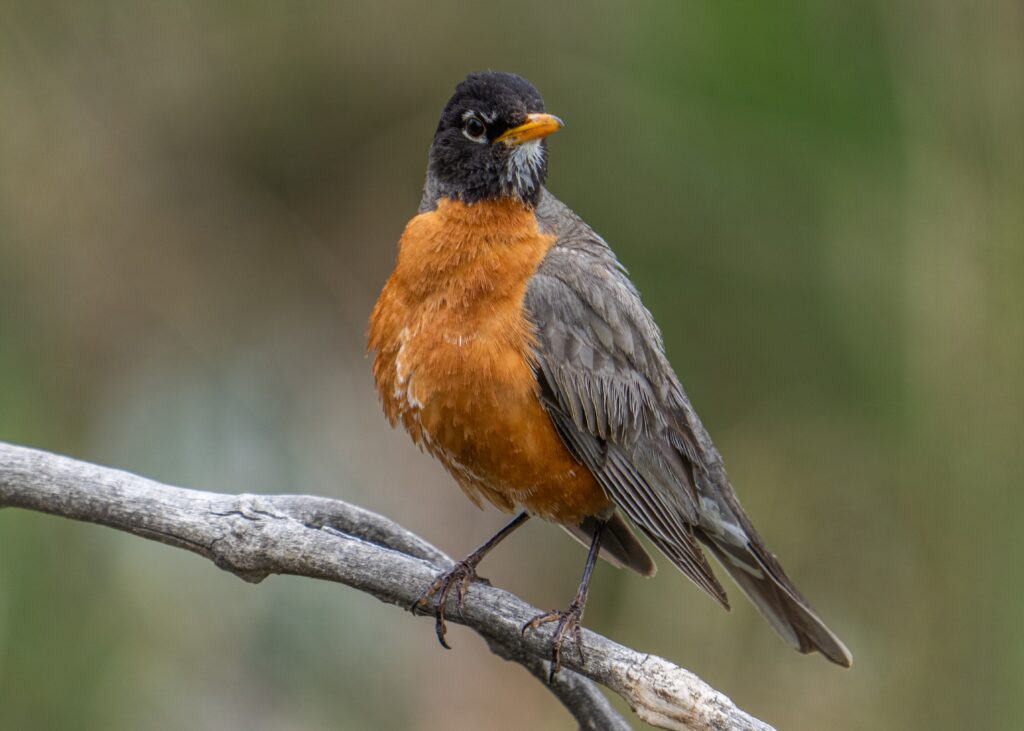
The Endearing Robin: A Symbol of Spring and More
japanchildrenrights.org – The robin, with its distinctive red breast and cheerful song, is a beloved bird across many parts of the world. More than just a harbinger of spring, the robin holds a significant place in folklore, literature, and the natural world. This article delves into the fascinating life of the robin, exploring its various species, behaviors, ecological role, and cultural significance.
A Family of Robins:
While the American Robin ( Turdus migratorius) is perhaps the most widely recognized, the term “robin” can refer to several different species within the Turdidae family (true thrushes) and other related families. In Europe, the European Robin (Erithacus rubecula) is a familiar sight, known for its bold personality and bright orange-red breast. Other birds, such as the Australian Robin (a member of the Petroicidae family), share the name but are not closely related. This article will primarily focus on the American and European Robins, highlighting their similarities and differences.
Physical Characteristics and Identification:
- American Robin: This robin is a medium-sized bird with a reddish-orange breast, gray-brown back, and a dark head with white eye rings. Juveniles have speckled breasts.
- European Robin: Smaller than its American counterpart, the European Robin has a bright orange-red breast and face, a gray back, and a brown head.
Both species have characteristic songs, often described as cheerful and melodic, contributing to their popularity.
Habitat and Distribution:
- American Robin: Found throughout North America, from Canada to Mexico, the American Robin thrives in a variety of habitats, including woodlands, parks, gardens, and suburban areas.
- European Robin: Primarily found in Europe, western Asia, and parts of North Africa, the European Robin prefers woodlands, hedgerows, gardens, and parks.
Both species are highly adaptable and can be found in urban environments, demonstrating their resilience.
Behavior and Diet:
Robins are primarily ground feeders, hopping across lawns and gardens in search of food. Their diet consists of:
- Insects and Worms: A significant portion of their diet, especially during breeding season, provides essential protein for growth.
- Berries and Fruits: In the fall and winter, robins switch to a diet richer in fruits and berries.
Robins are known for their distinctive foraging behavior, tilting their heads to listen for earthworms moving underground.
Nesting and Breeding:
- American Robin: The female builds a cup-shaped nest of twigs, mud, and grass, often in trees or shrubs. She lays 3-5 blue eggs and incubates them for about two weeks.
- European Robin: The European Robin also builds a cup-shaped nest, typically in cavities, dense vegetation, or even man-made structures. The female lays 4-6 creamy-white eggs with reddish-brown speckles.
Both species are fiercely protective of their nests and young.
Ecological Role:
Robins play a crucial role in the ecosystem:
- Insect Control: By consuming large quantities of insects, they help regulate insect populations.
- Seed Dispersal: Robins contribute to seed dispersal by eating fruits and excreting the seeds in different locations.
- Prey for Predators: They serve as a food source for various predators, such as hawks, owls, and foxes.
Cultural Significance and Symbolism:
Robins hold a prominent place in folklore and literature:
- Spring and Renewal: Their return in the spring is often associated with new beginnings and the end of winter.
- Good Luck and Hope: In many cultures, robins are considered symbols of good luck, hope, and new opportunities.
- Literary Representations: Robins have been featured in numerous poems, stories, and songs, further cementing their place in popular culture.
Conservation Status and Threats:
Both the American and European Robins are currently classified as Least Concern by the IUCN Red List, meaning they are not currently facing immediate threats to their populations. However, they still face challenges:
- Habitat Loss: Urban development and deforestation can reduce suitable nesting and foraging habitats.
- Pesticide Use: Pesticides can directly harm robins or reduce their food sources.
- Climate Change: Changes in climate patterns can affect their migration and breeding cycles.
Conclusion:
The robin, whether the American or European variety, is more than just a common bird. It is a symbol of spring, a vital part of the ecosystem, and a source of joy for many. By understanding and appreciating these birds, we can contribute to their continued success and ensure that their cheerful songs continue to fill our gardens and woodlands.


